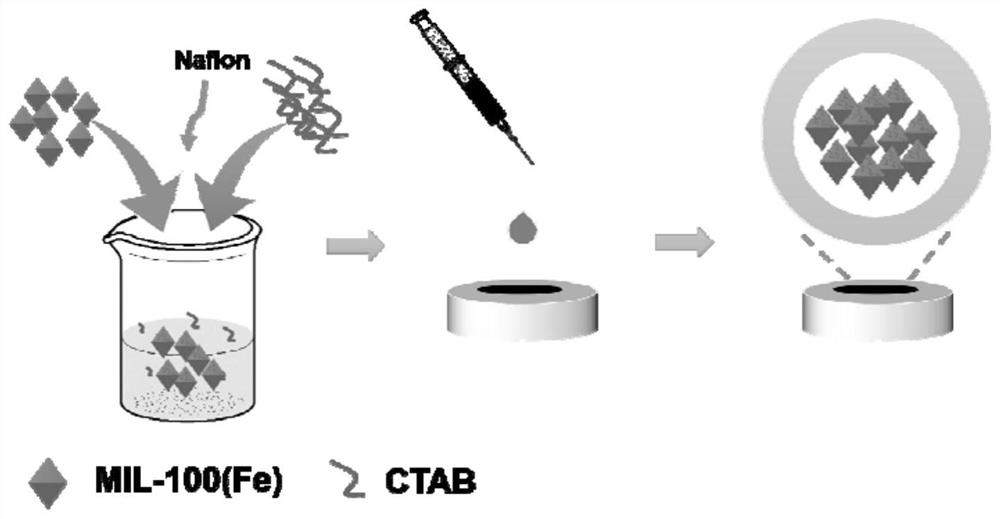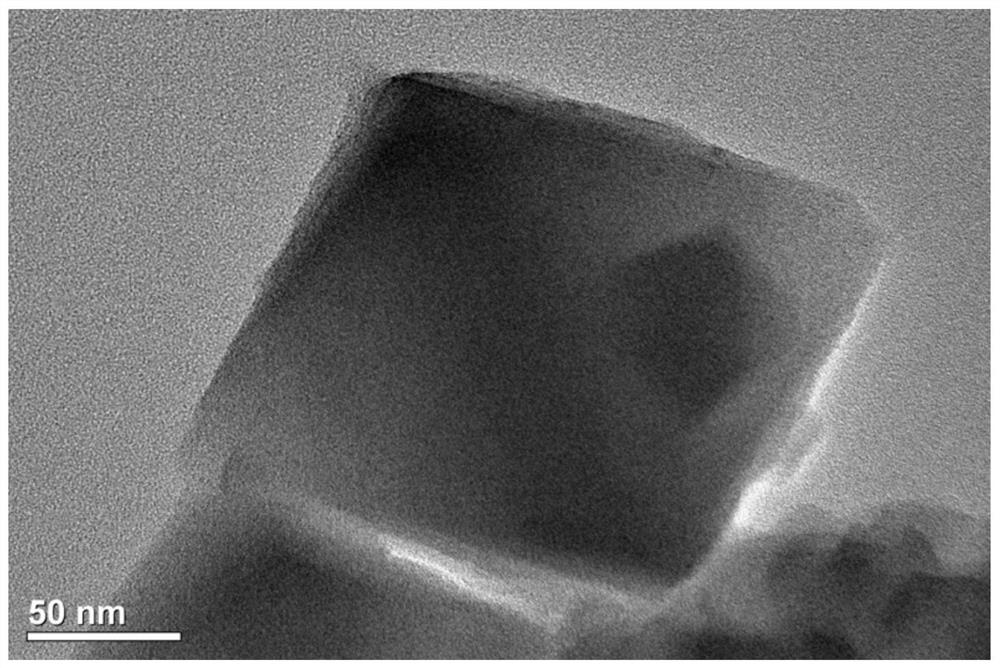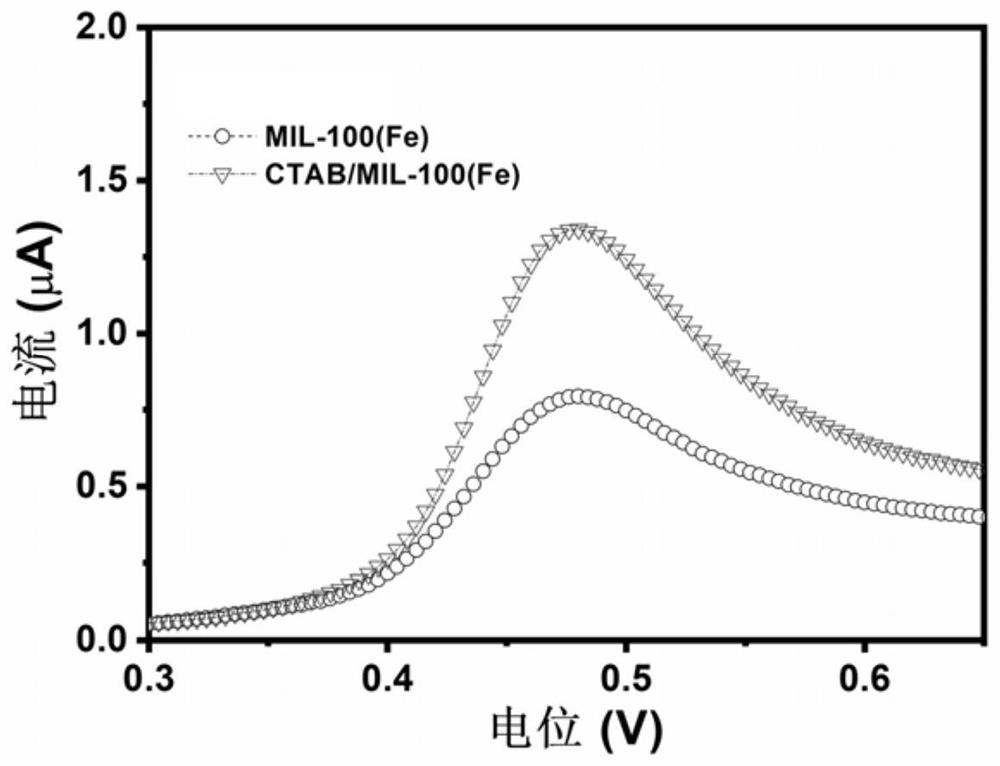Application of an electrochemical sensor for the detection of bisphenol-a in the dust of electronic waste dumps
An electrochemical and sensor technology, applied in the field of sensors, can solve the problems of impaired immune function, toxicity, increased risk of cancer, etc., to achieve the effect of improving electrocatalytic activity and optimizing deposition potential
- Summary
- Abstract
- Description
- Claims
- Application Information
AI Technical Summary
Problems solved by technology
Method used
Image
Examples
Embodiment 1
[0039] The iron metal-organic framework MIL-100(Fe) was prepared by the following steps: First, 1.2 mmol of ferric nitrate nonahydrate and 1.0 mmol of trimellitic acid were dissolved in 5 mL of deionized water, which were uniformly dispersed by ultrasonic, and then mixed with The solution was transferred to a 10 mL autoclave and reacted at 180 °C for 12 h. After the reaction was completed, it was cooled naturally, and the obtained solid was centrifuged with deionized water, washed and dried to obtain MIL-100(Fe).
[0040] like figure 1 As shown, 0.96 mg of MIL-100(Fe) was added to 2 mL of ethanol-water mixture with a volume ratio of 1:1, and then 0.8 mg of CTAB and 20 μL of Nafion solution (5wt%, SIGMA- 274704), ultrasonically dispersed for 1 hour to obtain a CTAB / MIL-100(Fe) suspension, use a micro-injector to take 5 μL of the suspension and drop it on the surface of a glassy carbon electrode (3 mm in diameter), and let it dry naturally in the air. After drying, the CTAB / MIL...
Embodiment 2
[0044] The application of the new electrochemical sensor prepared in Example 1 in the detection of bisphenol A. The details are as follows: the detection is completed in a traditional three-electrode system, using platinum wire electrode as the counter electrode, calomel electrode as the reference electrode, the prepared CTAB / MIL-100(Fe) as the working electrode, 0.1mol / L phosphoric acid Buffer (Na 2 HPO 4 / NaH 2 PO 4, pH=7) as the supporting electrolyte solution. The glassy carbon electrode was first ground and polished on alumina polishing powder with a particle size of 50 nm, and then ultrasonically washed with deionized water and anhydrous ethanol in turn. The novel electrochemical sensor is divided into two steps in the detection of BPA. First, the molecular bisphenol A in solution was enriched and adsorbed onto the sensor surface; then, differential pulse voltammetry (DPV) scanning was used to oxidatively dissolve bisphenol A and the current-voltage curve of this pr...
PUM
| Property | Measurement | Unit |
|---|---|---|
| concentration | aaaaa | aaaaa |
Abstract
Description
Claims
Application Information
 Login to View More
Login to View More - Generate Ideas
- Intellectual Property
- Life Sciences
- Materials
- Tech Scout
- Unparalleled Data Quality
- Higher Quality Content
- 60% Fewer Hallucinations
Browse by: Latest US Patents, China's latest patents, Technical Efficacy Thesaurus, Application Domain, Technology Topic, Popular Technical Reports.
© 2025 PatSnap. All rights reserved.Legal|Privacy policy|Modern Slavery Act Transparency Statement|Sitemap|About US| Contact US: help@patsnap.com



